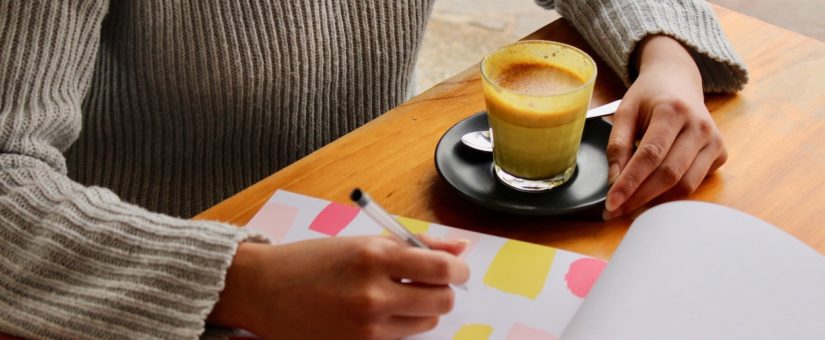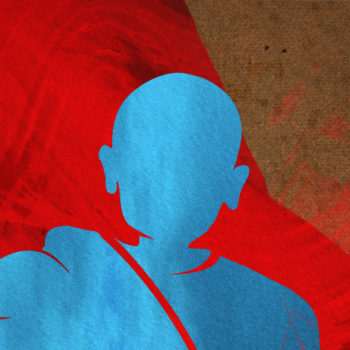
Evoking Colour: The Importance of Writing for Racialized Women
- Posted by Augur Blog
- On January 29, 2020
- 0 Comments
- women of colour, writers of colour
By Maryam Gowralli
As a writer motivated by how the creative process fuels poetry, and as I complete my creative-thesis application for graduate school, I recognize that once again I am that ethnic woman pursuing higher education in creative writing. Is it weird to feel displaced in one’s own body?
Despite its problematic premise in Western epistemology, the concept of women and its potency as the infinitely unruly, unclean and unknowable is a thought that continues to linger. Without being able to completely disavow this assumption, women-of-colour in the West must now reckon with what it means to be violently pinned to colonial and neocolonial structures. Thus a political resistance in language is born and as such, no two images of the feminine silhouette are the same.
There’re an underlying shame, apprehension and anger that comes with telling the system that racialized culture does in fact inform mainstream art—whether it’s how we write, how we read, and what we see. As a mixed-race woman of Trinidadian-Indian and Indonesian descent, who was also born on the prairies of paternalistic Alberta, all facets of my nationality and ethnic identity hold significant weight in how I see the world. I envision such facets as tectonic plates grinding against one another for precedence.
I’m Canadian; I grew up with hockey and all things wintery. But I’m also a product of diaspora, so I grew up hearing stories from my father and other family members about the Caribbean and the people who managed to persevere their Indian culture (Hindu, Muslim, or otherwise). And the desire for cultural preservation was interestingly influenced by words of colonial resistance found in Afro-Caribbean reggae music and black consciousness.
I’m also part Indonesian, and Indo-Malay culture is strong in its mixture of Sufism and diverse tribal Indigenous epistemologies and ways of life. Furthermore, Indonesia’s tumultuous history fighting against Dutch and Japanese colonization during World War II runs just as deep as the history of the exchanging of hands between the French, Spanish, and English in Trinidad during colonial days.
Creative writing often involves a description of reality. And how one views the world through the lens of culture, race, nationality, or religion will always present itself as a conflict towards Eurocentric writing. Likewise, it is with every involved writer that the words surrounding artistic integrity and authenticity incite one to locate oneself and one’s work within an ever-evolving culture and literary landscape. For many people of colour, and in particular women, the urgency of self-identification comes with linking oneself to a racial or ethnic identity. Yet for myself, the struggle to explore my heritage through writing is often a struggle between anxiety about creating enough imaginative empathy, by discussing lived-traditions and stories, and the encroachment of accidental appropriation. Am I writing the bodies of my people properly? How well can I really know the bodies of others? Where does the origin of my writing lie? How does this ceaseless search become activism? Is activism only possible through kinship? For every writer-of-colour who seeks to ethically dismantle heritage and coloniality through imagination, these second guesses will always resound.
But I have a confession to make.
What I write will inevitably disturb. I am dark. I am both the arresting Komodo Dragon and the rise of brackish slime behind the throat of reptilian lips. This contrast represents the potential of poetry to be beautiful without adornments. Venomous in its business with words.
My body is a landscape that represents a distinct history of conflict as both a physical and a political entity. My body has a strong visceral quality as it represents a sense of torture and woundedness throughout history that can’t be defined and is reflected in my poetry. Haunted by a darkness that can’t be seen except when I show its face. This difficulty in representing the racialized body in literature written by women-of-colour leads to an extension of the boundaries of genres, and is in many ways a rebellion against conventional views of women’s corporeality, and indeed white women’s literature.
Horror-poet, Saba Syed Razvi’s In the Crocodile Gardens, utilizes her American-East Asian childhood to keep her language creepy and dark. Her writing contends with corporeality as it describes the body at war with cultural anxieties in representative forms. The title itself informs the very idea of dismantling superficial sympathy, ‘crocodile tears,’ in order to engage with ideas of the material body as grotesque spectacle.
Inanna Publication’s Other Tongues: Mixed-Race Women Speak Out is a distinctly one-of-a-kind, Canadian anthology that actively seeks to educate, investigate, and illuminate the ways in which mixed-race women self-identify in the 21st century. The anthology questions what race means and actively rebukes the insistence of hegemonic culture in a “post-racial” age. The assumption being that the tokenized inauguration of mixed people in mainstream media, particularly in politics, movies, TV shows, and music videos is enough.
And so, as I continue to write poetry and speak into the discourse as a person-of-colour, I hope that my creative writing will continue to interrogate the things that matter with frankness and imagination. I hope that one day women-of-colour entering the literary world will not feel apprehension about not following conventions.
I also hope that we will be welcomed should we choose to use long-standing ones. Enter the fold through your displacement, your in-betweenness and ambiguity with delight. Become the shifting shapes of individual agency and emotion. Become the resistance against prescribed roles while exploring the concreteness of reality and the traces of histories’ underbelly. Such a combination reveals how language has the power to encounter the past, confront systemic issues, and communicate violence while cultivating the potential for empathy.
MARYAM GOWRALLI has a BA in English Literature with Distinction from the University of Calgary. She was an editor for The Quill Magazine and NōD Magazine, and produces a scattering of published poetry. Her works tend to be inspired by her diasporic/hybrid crossroads as a Canadian woman of Trinidadian-Indian and Indonesian descent. Find her works at The Waking, Untethered Magazine, and elsewhere.




0 Comments